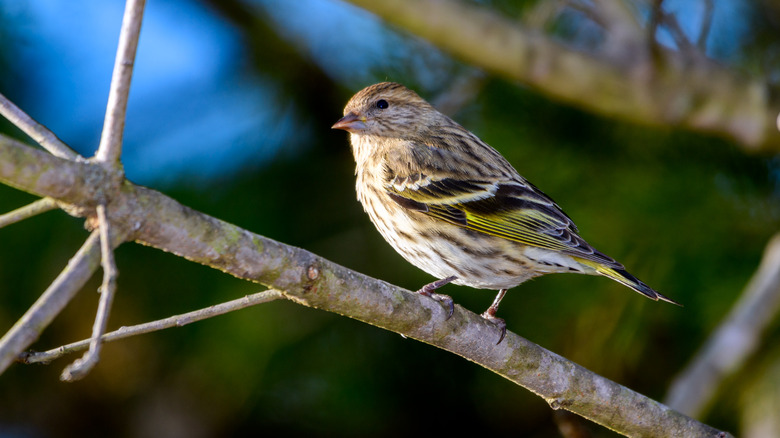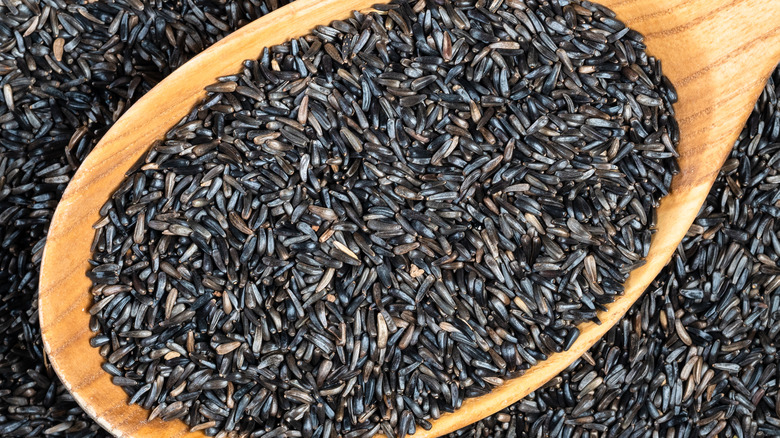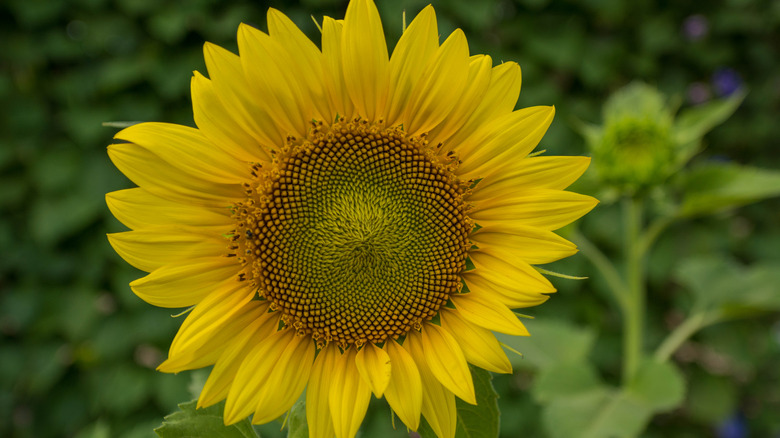The Must-Know Tip For Attracting Pine Siskins To Your Yard
Small and unassuming, the brown and white speckled pine siskin is a plain yet fascinating backyard visitor. Flashes of yellow on the wings and tails of adults add some flair to their look, but all in all, pinus siskins are definitely not showy birds. However, while a bit unremarkable at first glance, these critters make up for their drab appearance with peculiar flight habits, sociable behavior, and an unmistakable ascending call. Pine siskins are considered widespread in North America. These members of the finch family are year-round inhabitants of colder regions and higher altitudes, from northern Canada to mountainous southern Mexico. Despite this vast range, they are less common in the south and at lower elevations.
However, periodic food shortages in pine siskins' year-round habitat can send flocks searching for a meal outside their comfort zones. Low food supply in northern habitats occasionally drives certain bird species south in search of sustenance. Known as "irruptions," these temporary moves can be exciting opportunities to spot new species at your feeders. Follow the annual finch irruption forecast, and if your area is predicted to see a pine siskin influx, stock up on oily seeds to draw them your way. Both Nyjer and black oil sunflower seeds will tempt these small birds, offering up plenty of fuel to keep them warm and on the wing.
Nyjer is a pine siskin magnet
Originally marketed as "Nyjer thistle," this unrelated seed is an oil-rich treat for tons of different kinds of finches. To survive in boreal forests and at alpine heights, pine siskins have higher body fat percentages than some other birds that are similar in size. Plus, their metabolic rates can skyrocket when necessary, keeping them alive in temperatures nearing -100 degrees Fahrenheit. Nyjer has a high oil content, making it prime fuel for chilly and travel-weary birds. Pine siskins have smaller beaks than most finches, and tiny Nyjer seeds also boast a thin shell that makes them easier to eat.
Nyjer seeds not only lure in siskins and other finches but notably aren't inviting to unwanted backyard guests. Bears and squirrels are two of the most dreaded visitors to bird feeders. Keep squirrels out of your bird feeders and hungry bears out of your backyard by serving up Nyjer. Neither animal cares for these seeds, so there's more to go around for the birds.
Back oil sunflower seeds are a crowd favorite
While larger striped sunflower seeds are too difficult for pine siskins to crack, black oil sunflower seeds are both manageable and irresistible to them. The high oil content helps pine siskins maintain their winter fat stores, and unlike Nyjer, black oil sunflower seeds appeal to a wider variety of birds. If your yard is short on space, there's a good reason to keep only one sort of seed in your birdfeeder. Black oil sunflower seeds help you make the most of limited space. With thin shells and high fat and protein contents, this wonder seed attracts not only finches but also cardinals, sparrows, chickadees, and even the occasional woodpecker.
Another advantage of black oil sunflower seeds over Nyjer is that they are widely produced in North America. A native of India and Ethiopia, Nyjer is one of the only bird seeds to be mostly imported. Opting for a product raised on this continent reduces the energy needed for shipping, making black oil sunflower seeds a greener choice by reducing your carbon footprint.


